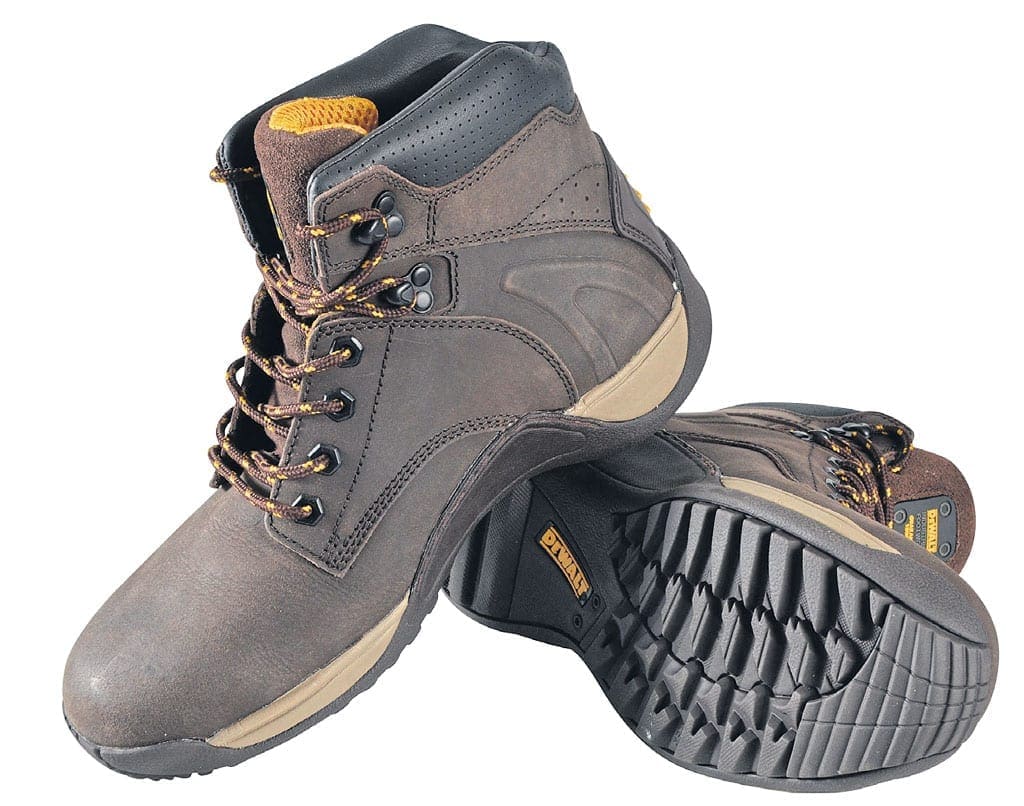
Given that it’s a motorcyclist’s legs and ankles that must support the weight of a heavy motorcycle on uneven, wet and challenging road surfaces, it’s important to wear a pair of quality riding boots.
Motorcycle boots should be sturdy, with good ankle support and non-slip stitched and bonded soles that should be at least 4mm thick. The boot soles should also prevent twisting of the foot and should have a strong heel and toe. Ideally, they will also feature armour over the ankle and shins, along with a metal plate running through the sole. The best boots tend to be made of good quality waterproof leather at least 2.5mm thick. Read on for further essential motorcycle boot advice.
Above ankle
The boots should secure firmly above the ankle, as motorcycle footwear that ends beneath the ankle will likely come off during an accident. Given the very high prevalence of ankle/lower leg injuries among motorcycle accident hospital admissions, this item of motorcycle clothing is an essential investment.
No work boots!
Do not substitute work boots with metal toe caps. They are not suitable as motorcycle boots and have been known to cause even worse injuries during accidents. Time should be taken to properly fit/try on motorcycle boots, and doing this should ideally be done using socks that would normally be worn.
Wearing two pairs of socks is not advised and can result in discomfort and blisters. When trying new motorcycle boots on for the first time, it’s a good idea to try them while on a motorcycle to ensure that it is possible to operate the foot controls.

Always ensure a proper fit
Motorcycle boots must fit properly. If they’re too tight, discomfort will result and this can create significant rider distraction. If boots are too loose, a rider can have problems operating the foot controls. Also, be aware that leather motorcycle boots will become softer and more comfortable with regular use.
Get advice
Do some research online, or ask fellow bikers what gear they’d recommend. Remember, we’re all different shapes and sizes, so what fits someone like a glove may not be good for you. Whether it’s a new pair of gloves, boots or full leathers, trying them on when on a bike is very important, so you can see if they get in the way at all.
Don’t leave yourself exposed to the elements or to injury. Make sure every part of you is covered up as seamlessly as possible. Remember if something is even slightly uncomfortable, it could cause chafing over a long journey and end up becoming a dangerous distraction from the road. Bear in mind wearing bright and fluorescent colours during the day and reflective elements in the dark can help improve your chances of being seen by others.
CE labelling
The European Personal Protective Equipment (PPE) Directive 1989 requires any clothing or personal equipment sold to provide protection from injury (for example, motorcycle clothing) should comply with the relevant European standard.
To comply, the gear has to be independently tested and certified. The manufacturer is then issued with a CE (Conformité Européenne) label, which shows that the motorcycle clothing conforms to the relevant European standard. The clothing or gear must carry a permanently attached CE label with the number of the standard.

Taking care of leather riding boots
So you’ve followed our advice and bought yourself a pair of new leather riding boots – it’s important that you look after them:
WET LEATHER: If the leather becomes wet after riding, it shouldn’t be ignored. As soon as possible, the boot should be slowly dried (force drying, especially with heat, will cause leather to harden and shrink). Drying should be done with little or no heat and enough air circulation to dry them completely. If they’re completely saturated, this could take up to two days but if they’re only half-soaked, you can dry them in one day.
If you saturate your boots every day, then you should rotate two or three pairs. This is critical for your feet as well, because in cold climates cold feet can be life threatening. Even if boots contain Gore-Tex® liners, they must be kept dry, or your feet will feel wet and cold.
WATERPROOFING: Many products make boots water repellent and some claim to make them waterproof. Often the choice is limited by compatibility with what the factory has applied (silicone-treated leather easily accepts more silicone, etc).
Before anything is applied, the boot should be clean and dry, heavy dirt should be scrubbed-off and light deposits wiped away with a cloth moistened in water or solvent. The oldest way to protect leather is by applying something incompatible with water.
The ancient Egyptians used beeswax, but other alternative ‘fill’ materials are available (they simply aim to occupy all space in the leather’s surface so water cannot enter). You apply them to the outer surface but they soon soak in, so you must frequently reapply them to maintain the waterproof quality. Don’t use too much or it will soak through onto your socks.
An alternative is to choose a product that’s solid after application, like waxes with solvent. Some crossover products use technologies such as aqueous wax or wax fortified with polymer. Some of these can be applied to wet leather. Gore-Tex® fabric-lined boots should be protected the same as you would treat them if Gore-Tex® wasn’t present.


